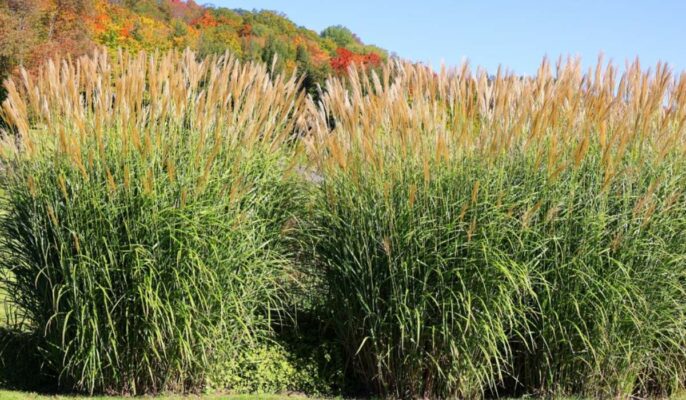Tropical plants like the Sarkanda flourish in hot, muggy environments. It frequently inhabits the tropical rainforests of south Asia and Indonesia. The plant has dazzling summer and fall blooms, but serves various other purposes.
Sarkanda’s huge, vibrant, and fragrant blossoms make it a wonderful addition to your home. Growing it from seeds or cuttings is simple. Once it has been established, it requires little maintenance. The plant can be cultivated either inside or outside, and it thrives in direct sunlight.
Source: Pinterest
Sarkanda: Quick Facts
| Plant Name | Sarkanda |
|---|---|
| Botanical Name | Tripidium bengalense |
| Genus | Tripidium |
| Clade | Tracheophytes |
| Order | Poales |
| Family | Poaceae |
| Life Cycle | Perennial |
| Mature Size | up to 4 m tall |
| Cultivation | Pakistan, Afghanistan and India |
| Benefits | Medicinal and commercial uses |
Sarkanda physical description
Sarkanda is a tropical perennial vine that grows up to six feet in length. It has long, narrow leaves with a smooth texture. The flowers are tiny and have a greenish-white colour, growing on spikes that can reach up to 20 inches long. Sarkanda plants require full sun for the best growth. The plant can be grown from seed or transplanted from its native environment after the last frost date has passed.
How to grow a Sarkanda plant?
Sarkanda plant is native to south Asia. Although it can be cultivated indoors, it does best in full sun and well-drained soil. To grow the Sarkanda plant indoors, choose a container with drainage holes and fill it with a one-inch layer of pebbles or small stones for drainage.
Next, add about half an inch of compost or aged manure mixed with sand or grits to help the roots grow through the substrate material faster than they would if there were no added nutrients available.
After that, put your sarkanda plant inside its container and give it a good watering until the soil surrounding its roots has absorbed all extra moisture (about twice as much water as might be required for a similarly sized houseplant). Finally, add about one inch of gravel or even clay around it.
Sarkanda: Maintenance tips
- The Sarkanda plant can withstand drought and pests. The seeds should be planted in early spring or late fall (depending on your area).
- The seeds should be evenly spaced one inch apart.
- While not excessively dry, the soil should have good drainage. The soil should be kept moist while the seedlings are growing.
- Sarkanda plants like full sun, although they can survive in the moderate shade as long as there is consistently adequate sunshine.
Sarkanda uses
Source: Pinterest
- The sap of Sarkanda trees is used to make toothpaste, soaps, and medicines.
- The leaves are also used to make paper pulp and paper pulp filters by drying them into sheets and then using them as filters for water purification systems.
- The plant has been used in traditional medicine for centuries and has been used to treat pain, fever, and inflammation.
FAQs
What are the benefits of Sarkanda plants?
Few species of grass are as nutritious and drought-tolerant as this one. The upper leaf sheets of flowering culms can be used to extract its valuable fibre.
How is the Sarkanda plant’s stem used?
In addition to being sweet, acrid, cooling, and aphrodisiac, the stem is excellent for burning, erysipelas, blood problems, urinary complaints, eye complaints, and tridosha.
